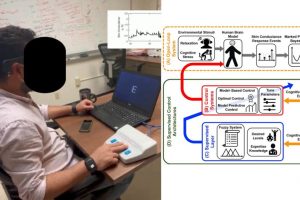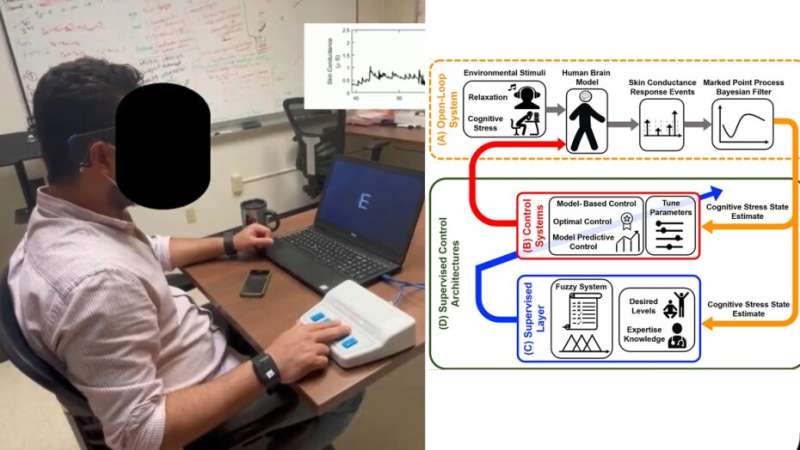Enhancement of closed-loop cognitive stress regulation using supervised control architectures


Feeling overwhelmed, anxious and agitated are among the symptoms associated with high levels of cognitive stress. Conversely, loss of cognitive engagement might also prevent individuals from following their goals. A low level of positive stress, which is also called eustress, might cause memory problems, lack of motivation, and poor concentration. It can also negatively affect individuals’ productivity in the workplace. According to multiple reports from Mental Health America, the percentage of people with depression and anxiety is growing in the United States. Thus, it is crucial to establish a mechanism for tracking one’s cognitive stress level and keeping it within a favorable range.
Influenced by the recent advances in wearable technologies and inspired by the fact that skin conductance signal carries important information regarding one’s internal arousal state, there could be practical approaches to handle cognitive stress levels in daily life. In response to any environmental stimuli, the human brain controls the autonomic nervous system in multiple ways. As changes in electrodermal activity (EDA) signals are impacted by the changes in sweat glands activation, variations in skin conductance signal can be tracked in real-time using wearable devices.
In order to eventually enable wearable technologies to track and regulate one’s internal stress state, the lab of Rose Faghih has pioneered methods for estimating the internal arousal state by monitoring one’s EDA, i.e., fluctuations in their skin conductivity. They have developed a mathematical framework to model the internal arousal state and relate it to the changes in skin conductance signal (i.e., a signal that can be measured via wrist-worn wearable devices). Moreover, to estimate the hidden arousal state, they have developed methods that analyze the EDA signal and extract the underlying arousal events that activate sweat glands.
Systematic modeling of the internal arousal state enables developing controllers to close the loop and regulate the estimated stress state. In this regard, well-established control techniques (i.e., linear quadratic regulator and model predictive controller) can be applied. In the process of finding the optimal control policy to regulate the stress state within these approaches, a corresponding cost function needs to be minimized. Hence, the performance of these control systems highly depends on the selection of corresponding objective functions.
As the researchers are dealing with a human-in-the-loop problem, the process of finding the appropriate objective functions becomes more complicated. To overcome this challenge and enhance the performance of the closed-loop system, Faghih and Fekri Azgomi, who recently completed his Ph.D. under the supervision of Faghih, developed a supervised controller that includes a knowledge-based supervised layer that adjusts the objective function and tunes parameters in real-time. In this supervised architecture, a fuzzy system is utilized to continuously update parameters in the objective function to adjust environmental variations. The results verify the effectiveness of proposed architecture in keeping the estimated stress state within a desired range by designing a supervised layer on top of the optimal control formulation.
Furthermore, the proposed supervised control architectures provide an excellent setting to incorporate the relevant medical expertise to enhance the closed-loop system. These novel supervised control approaches could be further expanded to deliver adaptive and robust closed-loop characteristics to address inter- and intra-subject variations.
There also exists great potential in implementing the supervised control architectures in other closed-loop applications such as adaptive deep brain stimulation for the treatment of neurodegenerative brain disorders and automating medication intake in a wide range of diseases. Once one models and tracks one’s internal states, utilizing supervised control methodologies would result in enhancing the closed-loop treatment practices in a more personalized manner.
Source: Read Full Article